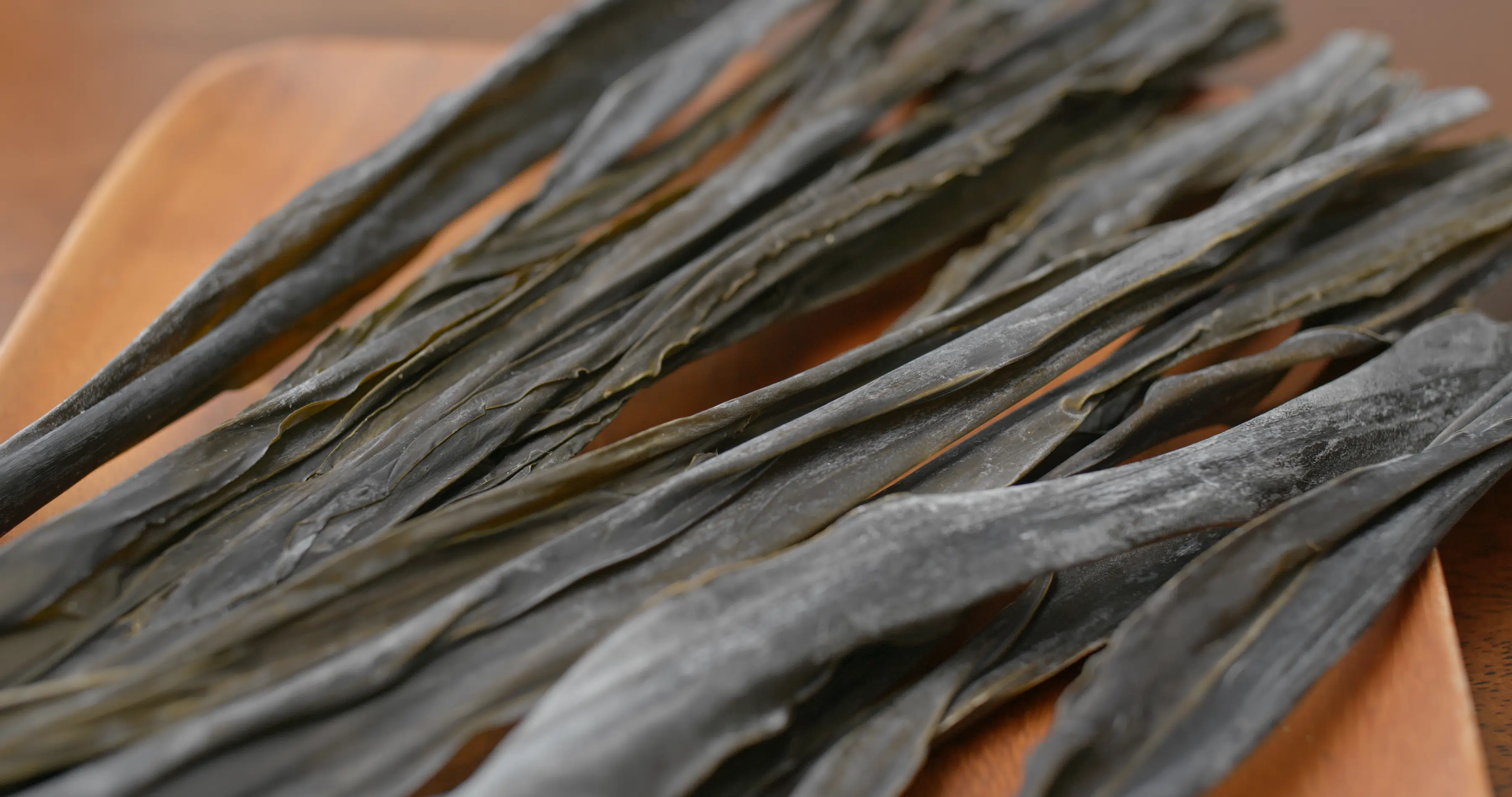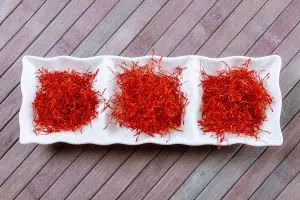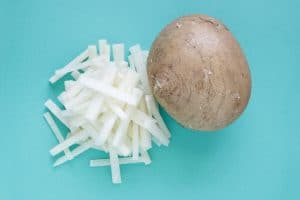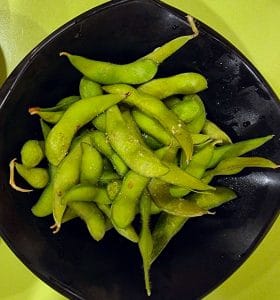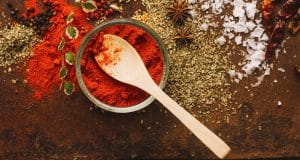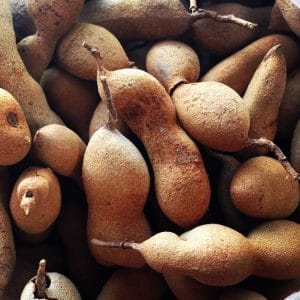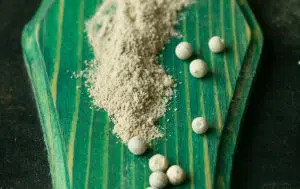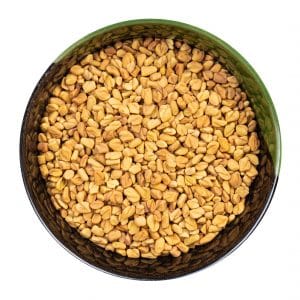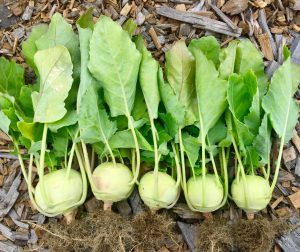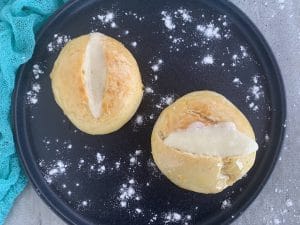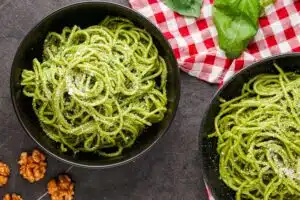Best Substitutes For Kombu
Important Note: When you buy through our links, we may earn a commission. As an Amazon Associate we earn from qualifying purchases. Content, pricing, offers and availability are subject to change at any time - more info.
Kombu is a kelp-like Japanese seaweed that forms the basis of the versatile broth, dashi. Unfortunately, this unusual ingredient is not always readily available, so what can you use to get that authentic umami flavor in your Japanese cooking? What’s the best substitute for kombu?
The best substitutes for kombu are dried kombu granules or kombu tea. However, you can mimic kombu’s umami flavor by using shiitake mushrooms, fish, or chicken stock. Condiments like mentsuyu, MSG, marmite, and soy sauce add umami flavor, while tomatoes and seaweed are vegetable replacements.
Usually found at Asian supermarkets, kombu is a valuable ingredient in Japanese, Chinese, and Korean cuisine. If you can’t find this distinctive seaweed, many replacements will help your dish taste delicious and authentic.
The Best Substitutes For Kombu
Fans of Asian food enjoy the savory taste and slightly slippery texture of kombu in miso soup, udon noodles, or tofu.
But if you’re unfamiliar with kombu or haidai (as it is known in China), let’s first look at this flavorful vegetable and how you can use it before exploring what you can substitute for it.
What Is Kombu?
Kombu is a form of kelp, a seaweed that grows naturally in the ocean, and a distant relative of the giant kelp. Like nori or wakame, other seaweeds, kombu is highly nutritious. It is harvested and dried before cooking.
You’ll find kombu in health food stores or Asian groceries, often in dried form as powder, strips, squares, or bundles, shredded or pickled. However, fresh kombu is also used, especially in sashimi.
The reason kombu is so prized in Japanese food is the distinctive taste it provides, known as umami — this is the fifth flavor humans taste, in addition to sweet, salty, sour, and bitter. The glutamic acid in kombu produces this flavor which is so fundamental to Japanese cuisine that it is known as the “essence of deliciousness.”
The most common way Japanese chefs use kombu is to make a stock called dashi, which traditionally combines water, kombu, and bonito flakes (dried and smoked or fermented tuna fish, called katsuobushi).
To make dashi, combine the water and kombu and allow it to boil and simmer. Add the bonito flakes, take off the heat, and steep for a few minutes. Strain the liquid and use as-is or as the basis for other dishes, such as miso soup, udon noodle broth, tofu soup, or clear broth soup.
The remaining cooked kombu can be sliced and added to stews or salads.
Additionally, kombu is suitable for baking (added to the dry ingredients), as a seasoning, as a coating for grilled food, and as the basis for tea. It is a helpful flavor enhancer, especially in vegetable dishes, and goes well with root vegetables and makes a tasty topping for grains and tofu.
Dried Kombu Granules
- Best for: Dashi, soup, sauces, baked goods, grilled foods, as a condiment or seasoningprop
It can be tricky to find fresh kombu or even dried pieces of kombu but dried kombu granules or cubes, often sold under the brand name Hondashi, are more readily available at many supermarkets.
You can use these granules as you would other stock granules, combining them with boiling water to make kombu for dashi, or crumbling them into another dish, making them a very versatile substitute. You can even put granules into flour for coating grilled food.
Kombu granules provide a powerful kombu punch, so take care to taste the dish as you add the granules.
You can also buy kombu granules already combined with other ingredients for dashi, such as bonito, sardines, etc.
Kombu Tea
- Best for: Dashi, baked goods, grilled food
Kombu tea is not a proper tea but a powdered version of kombu. Although it makes a hearty beverage, kombu tea is also an excellent substitute for kombu when you want the umami flavor in dashi or combine it with the dry ingredients for baked goods or grilled food.
You often find flavored versions of kombu tea (plum is popular), so consider using the unflavored versions when substituting it for kombu.
Dried Shiitake Mushrooms
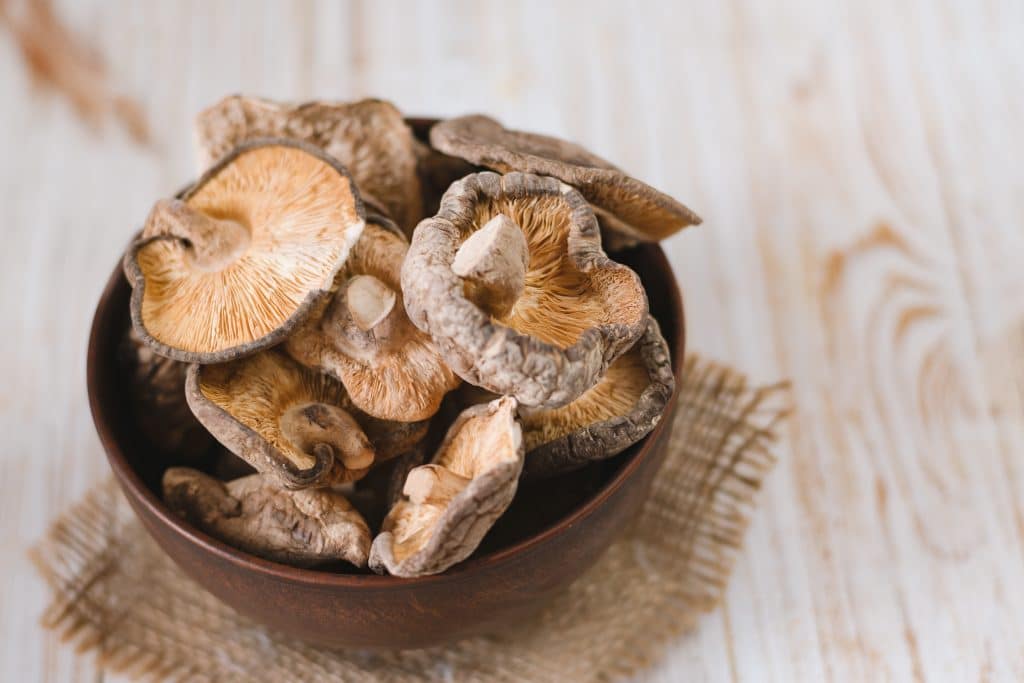
- Best for: Dashi, noodle broth, soups, stews, salads
If you can’t find a kombu-related product, shiitake mushrooms are an excellent substitute for the umami or savory flavor that kombu provides. They are pricey, but you need very few to create the flavor you want.
These gorgeous Asian mushrooms are brown or black, umbrella-shaped, and have a distinctive earthy flavor. You can use them fresh or dried, or even in the form of dried stock powder or granules.
If you’re using dried mushrooms, you need to soak your chopped shiitake mushrooms overnight in the fridge. Use a quarter cup of water per mushroom — they soak up a lot of water.
To make a flavorsome dashi-like stock, you can boil fresh or soaked dried mushrooms in water with basil, parsley, and oregano. Some vegan versions of dashi use shiitake mushrooms, so your broth will still be authentically Asian.
Add shiitake mushrooms to any noodle broth or soup, as they mimic the texture of kombu and the taste. They are also good in Asian salads.
Bonito, Whitefish, Or Shellfish
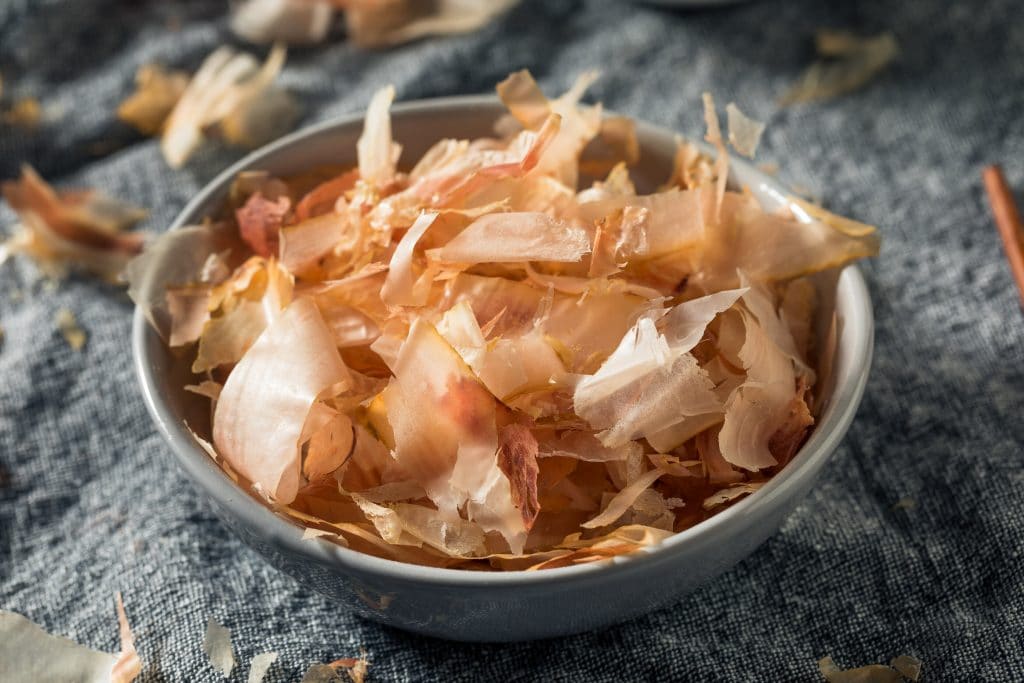
- Best for: Dashi, soups, noodle broth, stews
Fish is a common ingredient in dashi, with bonito or dried tuna the most likely. Although fish won’t replace the kombu flavor in dashi or broth, it will create a savory and rich umami taste for Asian dishes.
Bonito shavings are simple to use. Place a pack of dried bonito in boiling water and allow it to steep for as little as three minutes. The dried fish will infuse the water and, once you’ve strained out the dried fish, it creates a stock that you can use like dashi.
If you can’t find dried bonito, you can use fresh whitefish (such as cod scraps from a fishmonger) or shellfish (use shells and heads) to create a similar stock. Clean the fish and boil it for a couple of hours — add seasoning or herbs as you wish (good ideas are tarragon, fennel, parsley, garlic, leek, or bay leaves).
For an additional Asian flavor, add mirin and soy sauce.
The aroma of the boiling fish is powerful, so be aware that you’ll be enjoying the fish before you eat it.
Hijiki, Wakame, Or Dulse
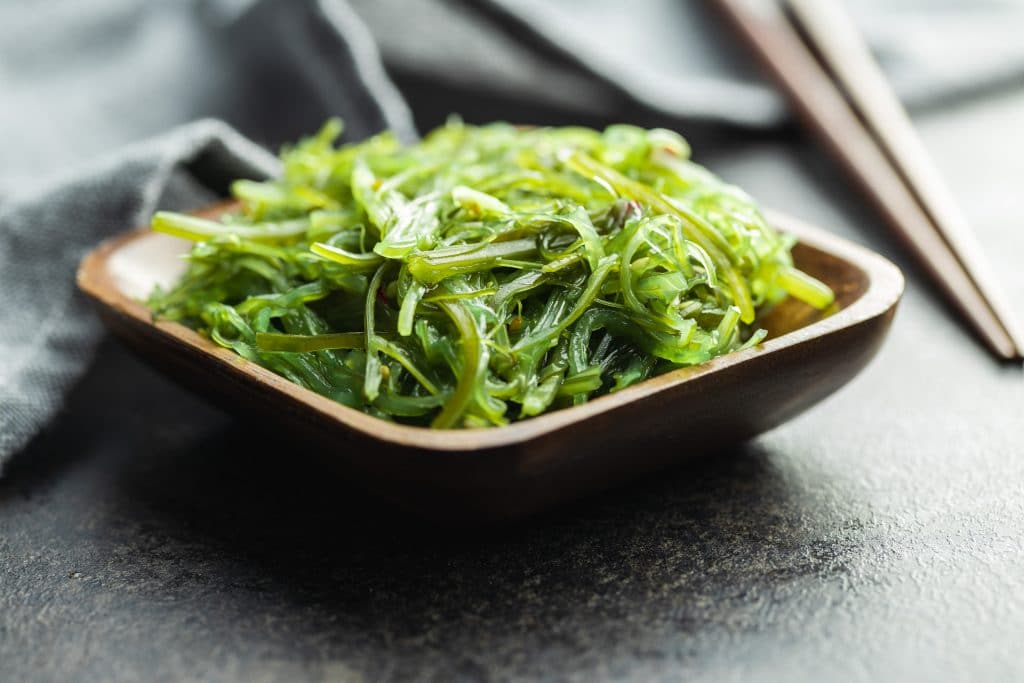
- Best for: Noodle broth, soups, stews, salads
Kombu is a kind of seaweed, so it makes sense to substitute it with another form of seaweed. Just as you’ll usually find dried kombu, you’ll also most likely buy other Japanese seaweeds in dried form.
The most likely substitutes in terms of flavor would be the robust, black hijiki, thin, green wakame, or reddish-purple dulse.
None of these seaweeds have the same level of umami flavor as kombu, so you can’t use them to make dashi. However, they can replace kombu as a vegetable in broths, soups, or stews, or sushi, giving the same texture and consistency.
All seaweed is highly nutritious, so it’s worth adding to your diet.
Chicken Stock
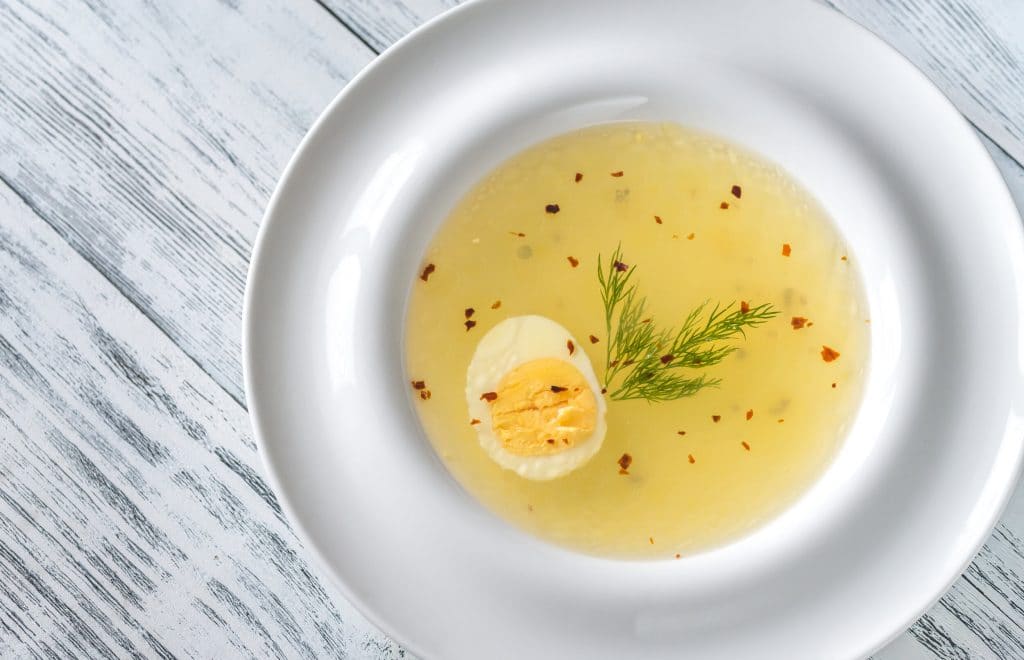
- Best for: Noodle broth, soups, stews
The chances are that if you can’t find kombu, you probably can’t find other Asian-style ingredients either. However, you can still make a tasty broth for noodles if you use chicken stock, which contains the same umami-creating glutamic acid as kombu does.
Also, don’t feel that using chicken is inauthentically Asian as there is a version of dashi enriched with chicken and seasoned with soy sauce.
You can use dried granules or stock cubes, but take the time to make your own stock for the best flavor. Butchers and groceries sometimes sell chicken carcasses for this purpose.
Cover the chicken with water, add chopped mushrooms, onion, carrot, celery, and herbs, and bring to a boil. Simmer for around three hours, adding water to cover as it cooks away. Allowing the stock to simmer for a while will increase the strength of the broth.
Strain the stock before using it in soups, stews, or broth for noodles.
Mentsuyu
- Best for: Sauces, stews, noodle broth as a condiment or seasoning
Mentsuyu is a typical Japanese condiment or seasoning, which combines dashi, soy sauce, salt, and sugar, and is often used to spice up noodles. Check the packaging to see whether the dashi ingredient is made from kombu or bonito to get the flavor you need.
It’s a handy kombu substitute if you want to add umami flavor to a sauce or stew or season a broth, but you can’t use it to make dashi.
Use mentsuyu with caution as it is pretty spicy and salty, so don’t add it to dishes that are already intensely salty, such as miso soup.
MSG
- Best for: Kombu butter, sauces, topping, as a seasoning

Monosodium glutamate, better known as MSG, is a flavor enhancer used widely in Chinese and other Asian cuisine and derives from sugarcane, which is fermented to produce glutamic acid, also found in kombu.
You’ll often find MSG under the brand name “Ajinomoto salt,” which is a naturally fermented product, much like miso. The image of MSG as a chemical substance is misleading, as it is pretty safe to eat.
Use MSG if you want to up a dish’s umami or savory flavor, or bring out the other flavors (e.g., of mushrooms). You can also use this flavor enhancer in sweet foods.
Soy Sauce
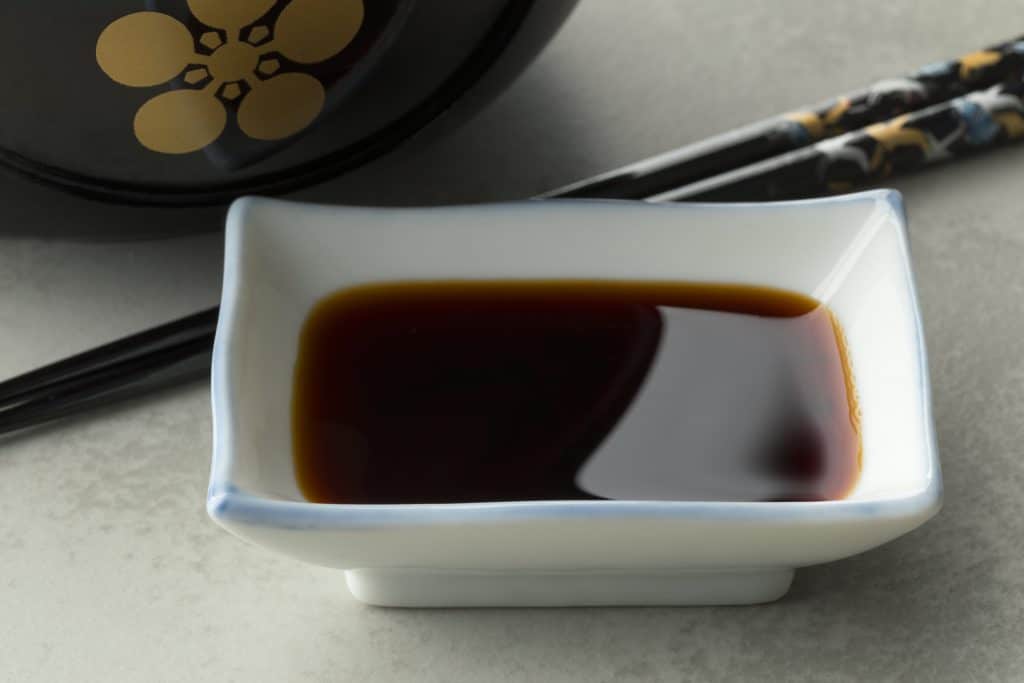
- Best for: Noodles, stir-fries, soups, stews, sauces
Apart from being readily available, soy sauce is a quick way to add a piquant flavor to any Asian or savory dish.
However, soy sauce has a couple of disadvantages. First, it is very salty and can overwhelm other flavors in a dish. Second, it darkens the color of whatever you’re making, which isn’t helpful if you’re aiming for a clear Japanese broth.
Use soy sauce sparingly as a kombu substitute, but add it to your pantry if you don’t already have some. Dark soy sauce and sweet soy sauce offer additional layers of flavor.
Tomatoes
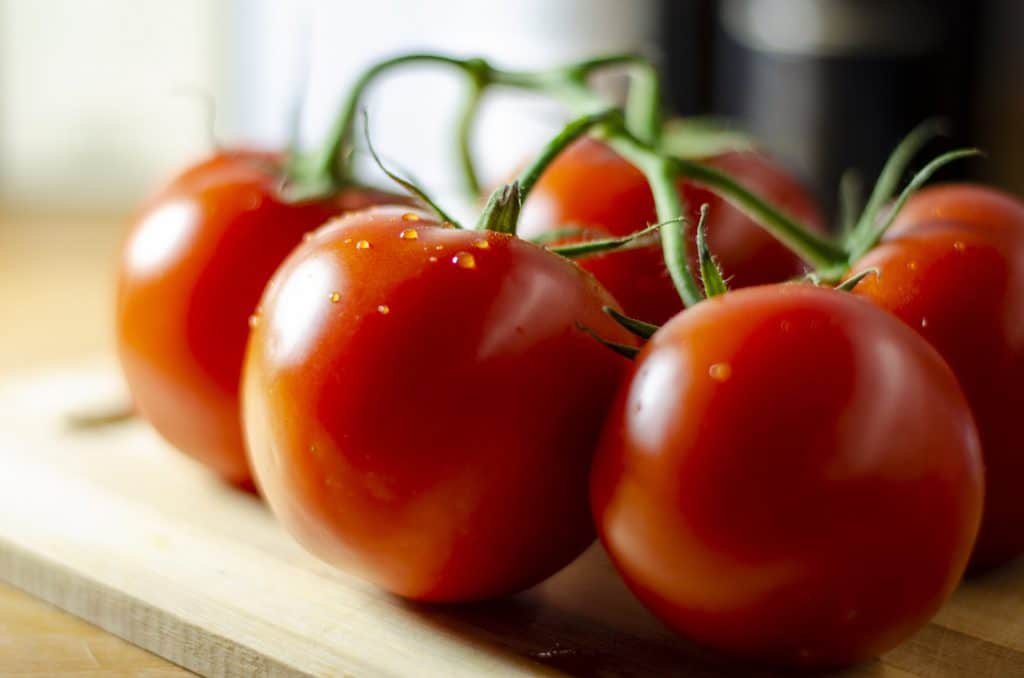
- Best for: Soups, stews, sauces, salads
Tomatoes are seldom used in traditional Japanese cooking, although they are a popular vegetable in Japan. However, because tomatoes are rich in glutamic acid, they are a suitable substitute for kombu in the flavor profile.
Although you won’t make dashi or a clean Japanese broth using tomatoes, you can make a tasty sauce, soup, or stew with these versatile vegetables.
To use tomatoes as a kombu replacement, dice them finely or use strained tomatoes.
For an even better flavor and texture match, choose sundried tomatoes and steep them as you would dried shiitake mushrooms in boiling water overnight. Use the steeping water as well as the rehydrated tomatoes.
Marmite
- Best for: Soups, stews, sauces, casseroles, gravies
Marmite, a yeast-based British sandwich spread, is probably the most unlikely substitute you can consider for kombu. However, it’s not that impossible a choice.
If you’re not aware of this product, you should try it. With the appearance of thick, black molasses, marmite is surprisingly potent in flavor — it is incredibly pungent and provides the umami kick that miso or soy sauce offers.
Although you can dissolve marmite in water to create a stock, it’s not your first choice when making dashi. However, adding a teaspoon of marmite to a sauce, stew, or soup will enhance the depth of flavor and add richness.
The marmite brand’s tagline is that you’ll either love it or hate it. Try it and see where you stand.
So, What Are The Best Substitutes For Kombu?
Finding a replacement for kombu is tricky, as it is a unique ingredient essential to making the Japanese staple stock, dashi. You can make dashi with instant kombu granules or tea or using shiitake mushrooms or chicken stock. However, if you want kombu’s umami flavor, use a seasoning like MSG, soy sauce, or marmite.
